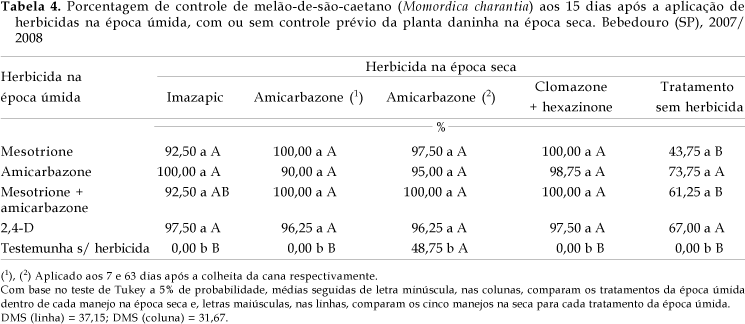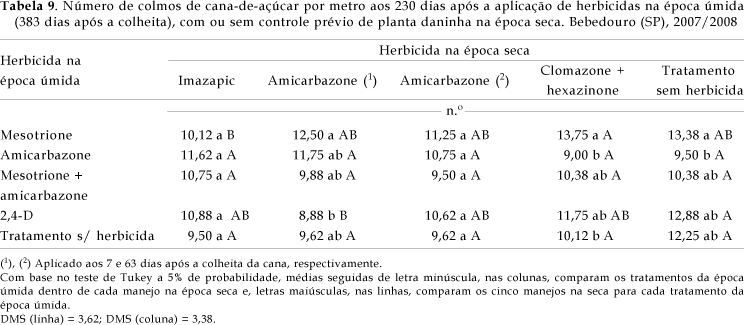To evaluate herbicides effects applied in pre and post-emergence, alone and in combination, in dry and wet season, for bitter gourd control (Momordica charantia) in sugarcane, the experiment was conducted from June 2007 to July 2008, in Gabriela Farm, in Bebedouro region, São Paulo State, Brazil. A randomized block in split-plot design was used with four replications. It were evaluate four herbicides treatments: imazapic (0.147 kg ha-1) and amicarbazone (1.4 kg ha-1), applied one week after sugarcane harvest; clomazone plus hexazinone (0.8 kg ha-1+ 0.2 kg ha-1) and amicarbazone (1.4 kg ha-1), applied on august, 63 days after sugarcane harvest, sprayed dry season, and one treatment without application. In wet season four herbicides treatments: mesotrione (0.192 kg ha-1), amicarbazone (1.4 kg ha-1), mesotrione plus amicarbazone (0.096 kg ha-1+ 0.7 kg ha-1) and 2,4-D (1.005 kg ha-1), were applicated in post-emergence, and one treatment without herbicide. Use of herbicides duing wet season is obligatory for bitter gourd control, and unnecessary duing dry season. Mesotrione and amicarbazone, alone and in mixture, are efficient plants control in post-emergence and also inhibition of new bitter gourd emergence.
amicarbazone; clomazone plus hexazonine; 2,4-D, imazapic; mesotrione; Momordica charantia










